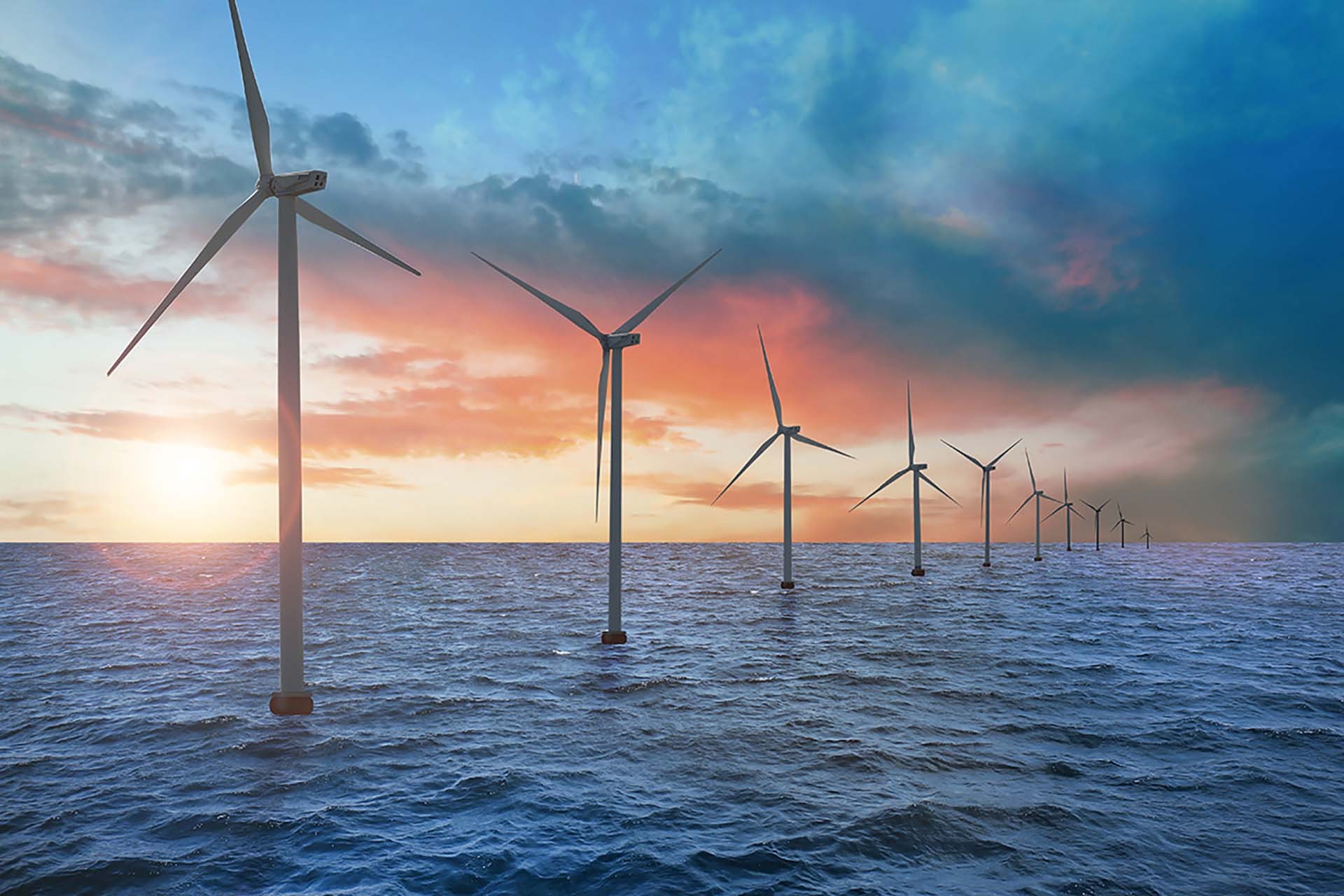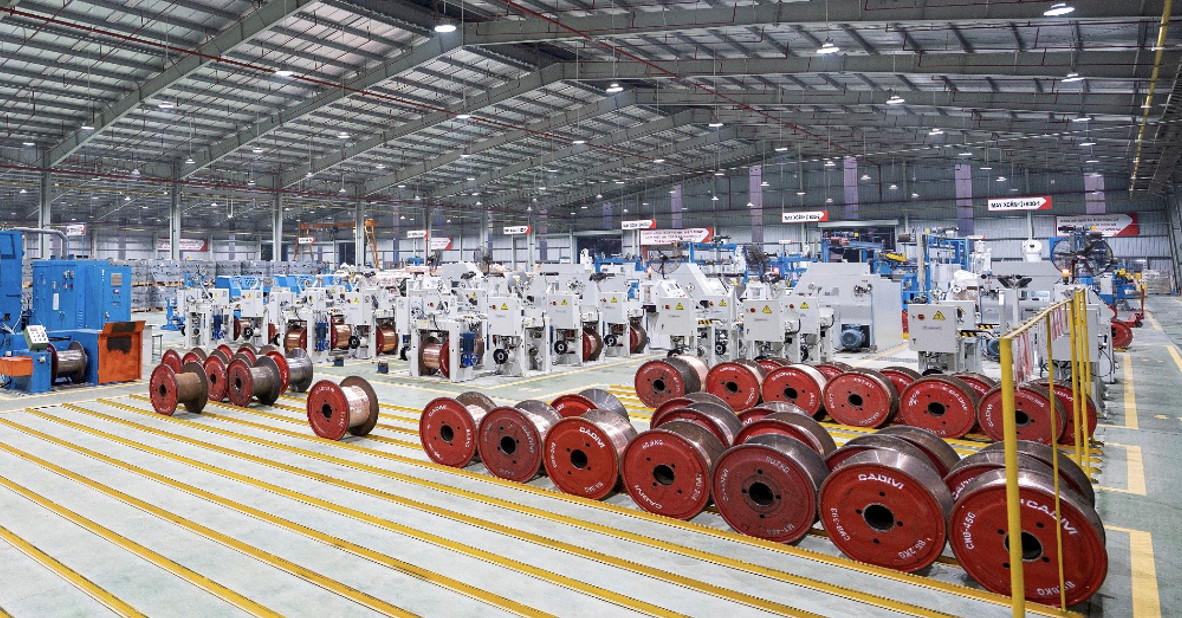 |
| Offshore wind power is one of the important clean energy sources in Australia's future energy planning. (Source: blueeconomycrc) |
In fact, green growth is identified as the focus of national development policies of many countries in the world in the effort to achieve sustainable development. Australia recognizes the need to join the clean energy trend and transition to Net Zero, otherwise it will be left behind. From the beginning, Canberra outlined a clear goal: “Go from laggard to leader!”.
From laggard to leader
Since late 2021, the Australian government has officially announced a model to bring net emissions to zero by 2050, in which technology plays a central role.
In a 100-page development model document outlining measures to get to net zero emissions by 2050 and the impacts on the economy, Australia has outlined four targets to achieve.
The first is to reduce total emissions and emission intensity in economic production and consumption. Coal mining is reduced by 50% by 2050 while coal and gas exports are reduced in the future.
The second is to increase carbon sequestration through reforestation, planting more trees on farms and improving the efficiency of forestry management.
The third is to increase the trading of emission quotas with countries in the region.
Finally , promote carbon capture and storage technologies.
Developing emission reduction technology is a top priority. Specifically, the technologies that Australia will prioritize in the coming time include green hydrogen, low-cost solar energy, energy storage, low-emission steel, low-emission aluminum, carbon capture and storage technology, and soil carbon.
Australia currently plans to invest $21 billion (about $13.69 billion) by 2030 to help develop these technologies. By tapping into the global shift to net-zero emissions, Australian industry could boost national income by $40 billion by 2050.
According to the above model, the development and application of new technologies not only helps reduce emissions but also limits the negative impact of this activity on the economy.
Specifically, the model predicts that the development of new technologies will create about 100,000 new jobs in these industries in Australia, of which 62,000 new jobs will be created in the mining and heavy industry sectors. In addition, owning low-emission technologies will contribute to the country's export turnover tripling by 2050.
Australian leaders have repeatedly stated that due to its own characteristics, the country will not use taxes but will bring its net emissions to zero by 2050 in its own way. Accordingly, the focus on promoting the development and application of emission reduction technology is expected to be a multi-target arrow, helping Canberra cut emissions while creating more jobs in a new energy economy.
Striving to become a green hydrogen superpower
Assessing Canberra's strategy to become a leader, Dr. Steve Hatfield-Dodds, research team leader at the EY Net Zero Center (Australia), said that by leveraging its strengths, Canberra is well positioned to achieve renewable energy superpower status, while meeting the target of achieving net zero emissions by 2050.
“The world is moving away from fossil fuels and towards clean energy. Australia has many low-cost, renewable energy sources such as wind and solar. Australia is also rich in minerals such as iron ore, copper and lithium… It is the combination of both strengths that has the potential to put us at the forefront,” Dr. Hatfield-Dodds believes.
Taking steady steps towards its goal, Prime Minister Anthony Albanese's government has committed $2 billion to invest in a program to support large-scale hydrogen projects in 2026-2027 and accelerate the country's renewable energy transition.
Green hydrogen has been called the key to cutting emissions. As Energy and Climate Change Minister Chris Bowen said, this is an investment in one of Australia’s key industries of the future because green hydrogen has a significant role and brings great opportunity for the “land of kangaroos”.
In addition, the government will provide households with low-interest loans worth a total of A$1.3 billion to help them use energy more efficiently, making improvements such as installing double glazing and solar panels on their roofs.
According to Dr. Steve Hatfield-Dodds, although Australia has a modern and mature energy infrastructure that can compete on a global scale, a long-term vision is necessary for Australia to achieve “superpower status”. One of the new visions is to “develop and strengthen the ability to provide energy when the sun does not shine and the wind does not blow”.
Additionally, if Australia wants to become a true leader in clean green energy, Canberra must bring its “neighbours” along on the journey, according to Patrick Viljoen, senior manager of ESG at CPA Australia.
Economic development goes hand in hand with environmental protection
According to Dr. Michael Parsons, from the Australian Volunteers for International Development (AVID) Program, policy advisor to the Vietnamese Minister of Natural Resources and Environment, green growth begins with abandoning the outdated notion that economic development and environmental protection cannot go hand in hand, aiming to maximize the combination of these two categories.
Australia has solved the problem of both economic growth and environmental sustainability by early imposing quite strict laws.
Accordingly, some planning and projects require approval or permits from the public authority regulating environmental issues. Most states and territories have specialized agencies that perform the function of approving implementation conditions and conducting investigations into alleged environmental harm.
Experience in Australia shows that when dealing with any violation, two aspects must be considered: whether the business intentionally discharged waste or it was just an unfortunate "accident" that occurred during the environmental treatment process.
Another point that needs special attention is to strictly control related issues right from the time of licensing new investment projects. We should not forget the environment for immediate economic benefits.
Source



![[Photo] Visiting Cu Chi Tunnels - a heroic underground feat](https://vstatic.vietnam.vn/vietnam/resource/IMAGE/2025/4/8/06cb489403514b878768dd7262daba0b)

























































































Comment (0)